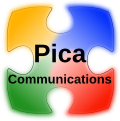
Suggestions for Change
Microsoft needs to make upgrades and technical support benefits less costly, more flexible, and easier to use
By Paul DeGroot
Principal Consultant
Pica Communications
SA has many flaws, but Microsoft still needs a program that rewards customer loyalty to its products by giving them upgrades on discounts and that provides ongoing support comparable to what other software vendors offer large customers. Here's what I would do to mitigate some of its worst features.
-
Let customers purchase SA at any time, not just when they purchase a new license. By prohibiting that today, Microsoft reveals insecurity about its own products: "We can't count on people wanting the next version, so we'll force them to buy the pig before they know how sick it is."
SA could still be a two- or three-year contract, but at least customers are guaranteed to get one upgrade if they can buy SA when they know they'll be getting an upgrade they value. Since everyone who purchases SA under today's kludgy program will probably continue to purchase it under better circumstances, and more customers would purchase it if they were guaranteed an upgrade, Microsoft would probably sell more SA. Even a small increase in new license purchases would make up for any loss in SA revenue due to other factors.
Microsoft would also see much better adoption of new products, as a bet on SA becomes a sure winner. Customers would also be more likely to take advantage of some little-used SA benefits, like e-learning materials and TechNet, which make sense as self-help resources for deployment and training on new products they have just purchased. Those materials don't get much use among the good-enough crowd. Reduce the SA term on renewal. To avoid having to renew SA for another three years to get an upgrade that might be only a few months away, SA renewals should be for only a year at a time. This poses some risks that customers won't renew. But that just means that Microsoft needs to keep performing, producing compelling products in a timely fashion to earn customer loyalty. Locking customers in and making them overpay for products they don't want only pushes them away. Reducing the term also gives Microsoft more flexibility in adjusting prices. If the price of a product goes down or there's a change in the product lineup, Microsoft can adjust SA prices on succeeding bills to reflect the change and ensure that customers don't overpay.
-
Reduce the price. Outside of an EA, SA “attach” to new licenses is very limited. Version upgrades used to cost between 40% and 65% of the full license price. That would reasonably put the cost of SA over three years at 15% to 20% a year, in line with general industry standards.
Stop charging more for SA on the desktop than on servers. SA benefits on servers are better than those for desktops (one tech support incident for every $20,000 spent, rather than one for every $200,000 spent, for example), and yet SA on servers is less expensive (25% rather than 29%). That doesn't make sense. The 29% customers pay for SA on the Windows OS is particularly egregious:
- SA on the Windows upgrade includes no tech support benefits
- Many companies don't do company-wide OS upgrades on existing computers because they require formatting the hard drive, reinstalling applications and personalizations--in short, a massive amount of lost time and user productivity
- Every time customers purchase a new computer, they get the latest version of the OS, so much of the time SA gives only gives them another license for a product that they already own, and since they can only use one (the OS license can't be transferred to another computer), the second one is a waste of money.
Reduce and simplify the benefits. With customers guaranteed an upgrade, Microsoft no longer needs to give customers a random bag of tchotchkes to make up for possible disappointment on upgrades. Fewer, more focused benefits that help customers get more out of their licenses are good. At a minimum, the minuscule Office tech support incident can be ditched. It makes Microsoft a laughing-stock and most customers spend more money keeping track of it than they save on tech support.
-
Get creative on SA terms, if letting customers buy it at any time is ruled out. SA costs should reflect risk. Someone signing up for SA in the 12 months after a product is released has the highest risk of disappointment. They should be paying 15% a year, not 29%, to reflect the risk they're taking. Someone adding SA to a new license three years after the release of the current product is much closer to the release of an upgrade and can pay more. It's a bit complicated, but any customer who can read a current Microsoft price sheet is qualified to figure this one out.
-
Offer a discount on Premier support based on SA spending. One of Microsoft's Premier Support executives admitted to me a few years ago that SA was his number one headache. Why maintain parallel support programs? There is already a way for SA customers to convert their SA incidents into Premier Support incidence, and I always encourage customers to do the conversion, but why complicate the customer's inevitable journey to Premier Support that way? Microsoft could greatly simplify the process and add a lot of momentum to the Premier Support brand if it used SA as a shortcut to Premier Support instead of making it the long way around.
